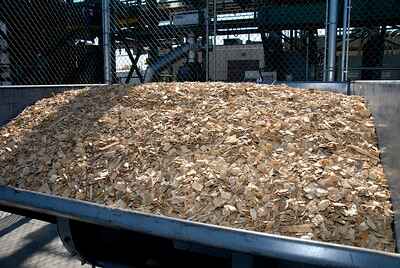5 Causes of Energy Waste Explained
Causes of energy waste are; fuel combustion, unmonitored appliances, inefficient industrial systems, poor insulation, and open biodegradation.
This article discusses the causes of energy waste, as follows;
1). Fuel Combustion (as one of the Causes of Energy Waste)
Fuel combustion is a major cause of energy waste, due to the conversion processes and heat dissipation outlets involved.
Waste energy can be emitted when burning all types of fuel, including fossil fuels, nuclear fuel and biofuel.
At the stage of combustion, the main mechanism by which waste energy is released is heat transfer by conduction [3]. This can occur while burning fuel to generate electricity, as well as in thermal waste management and waste-to-energy processes like incineration and pyrolysis.
In electric generators and power plants, mechanical energy from fuel combustion can cause friction between moving components, which is yet another avenue of energy wastage.
Incomplete combustion causes indirect wastage of energy through the wastage of fuel resources. Also, toxins and greenhouse emissions that result from fossil fuel combustion, can cause further energy waste through environmental remediation processes, that could be avoided through sustainable practices.
The role of fossil fuels in resource depletion and environmental degradation has been instrumental toward the advancement of renewable energy technologies like solar panels, wave power converters, hydroelectric plants and wind farms.
Although energy can be lost from these technologies, it is not an unsustainable occurrence since the primary energy resource is renewable.
Other technologies that have advanced as a result of efforts to minimize energy waste from fossil fuel combustion include electric cars, smart grids, energy management systems and hybrid cars.
2). Unmonitored Appliances
Unmonitored appliances are a major cause of energy waste.
This is especially because the domestic sector accounts for a huge percentage of energy consumption globally.
When electric appliances like dishwashers, refrigerators, electric ovens, and clothes dryers are left unsupervised, and allowed to consume electricity without actively being used, large amounts of energy can be wasted.
Measures to address this problem include the implementation of energy conservation principles, adoption of energy efficient appliances, as well as smart house concepts.
These measures all aim to monitor and control the use of energy by appliances. An example is smart scheduling, an energy management application that regulates the supply of power to various appliances based on their operating schedules. This approach is reported to have resulted in energy savings of up to 31% [1].

3). Inefficient Industrial Systems (as one of the Causes of Energy Waste)
Energy efficiency is a percentage measure of the proportion of available energy that is used to do productive work.
In industrial systems for energy management, electricity generation, raw material processing, and manufacturing; efficient operation of the system reduces the rate at which energy is wasted.
However, many industries depend on inefficient systems and machinery for most of their operations. This includes petroleum and gas, product manufacturing, and power generation/supply industries [4].
Also, the absence or insufficient practice of recycling in industries is a cause of energy waste. Such unsustainable conditions lead to the loss of energy stored in, and used to manufacture various products.
Measures to address the problem of energy waste from industrial inefficiency include energy recovery systems like heat exchangers and cogeneration equipment, as well as waste-to-energy practices.

4). Poor Insulation
Poor insulation of any system creates outlets through which energy is lost, thereby causing energy waste.
Systems requiring insulation to prevent this from occurring include buildings, some power plant facilities and industrial equipment.
In these systems, insulation helps to regulate internal temperature. This conserves energy and reduces the amount that is expended on heating, cooling, and other forms of temperature regulation.
By conserving energy, insulation also conserves fuel and mitigates environmental degradation in the form of greenhouse and toxin emissions [5].
5). Open Biodegradation (as one of the Causes of Energy Waste)
Biodegradation is a natural process by which energy is recycled in the ecosystem [2].
It leads to the cycling of nutrients and energy across all levels of the energy pyramid, and converts biomass to bioenergy that is used to do work.
However, this only occurs when biodegradation is restricted to closed natural systems like soil.
Under exposed conditions such as in landfills, biodegradation can have detrimental effects. Open biodegradation causes the loss of energy in form of biomass, as well as the emission of greenhouse gases like carbon dioxide and methane, into the atmosphere.
Conclusion
The causes of energy waste are;
1. Fuel Combustion
2. Unmonitored Appliances
3. Inefficient Industrial Systems
4. Poor Insulation
5. Open Biodegradation
References
1). Chauhan, R. K.; Chauhan, K.; Badar, A. (2021). “Optimization of electrical energy waste in house using smart appliances management System-A case study.” Journal of Building Engineering 46(2):103595. Available at: https://doi.org/10.1016/j.jobe.2021.103595. (Accessed 20 September 2022).
2). Eskander, S.; Saleh, H. M. (2017). “Biodegradation: Process Mechanism.” Environmental Science and Engineering Vol. 8: Biodegradation and Bioremediation (pp.1-31). Available at: https://www.researchgate.net/publication/312491332_Biodegradation_Process_Mechanism. (Accessed 21 September 2022).
3). Harsha, I. B.; Addepalli, K.; Krishnasamy, K. (2018). “Heat transfer augmentation on ic engine waste heat recovery system.” Available at: https://www.researchgate.net/publication/323275908_Heat_transfer_augmentation_on_ic_engine_waste_heat_recovery_system. (Accessed 21 September 2022).
4). Kang, D.; Lee, D. H. (2018). “Identifying energy-inefficient industries vulnerable to trade dependence of energy sources.” Energy Efficiency 11(4). Available at: https://doi.org/10.1007/s12053-018-9638-4. (Accessed 20 September 2022).
5). Zhelykh, V.; Yurii, F.; Adamski, M.; Rebman, M. (2021). “Reducing Greenhouse Gas Emission through Energy-Saving Technologies for Heating Modular Buildings †.” Environ. Sci. Proc. 2021, 9(1). Available at: https://doi.org/10.3390/environsciproc2021009010. (Accessed 21 September 2022).




